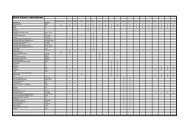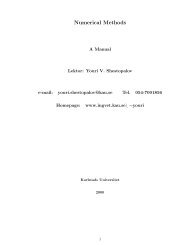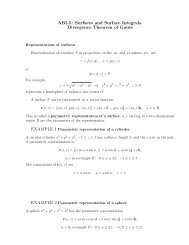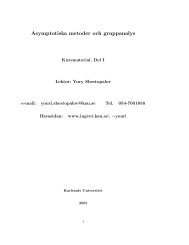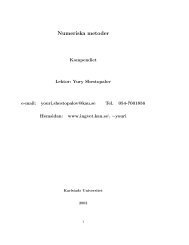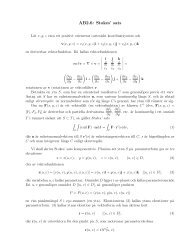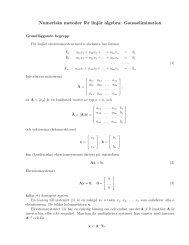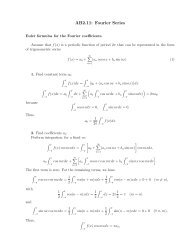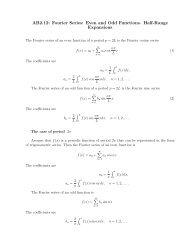You also want an ePaper? Increase the reach of your titles
YUMPU automatically turns print PDFs into web optimized ePapers that Google loves.
Coefficient a 0 vanishes because (see [4])∫1−11 dx√x − y 1 − x2= 0, −1 < y < 1. (353)Equating, in (352), the coefficients multiplying U n (y) with equal indices, we obtain a n =f n−1 /π, n ≥ 1. The coefficient a 0 remains undetermined. Thus the solution to equation (346)depends on an arbitrary constant C = a 0 /2. Write the corresponding formulas for the approximatesolution,ϕ N (x) = C + 1 N∑f n−1 T n (x); (354)πand the exact solution,n=1ϕ(x) = C + 1 ∞∑f n−1 T n (x). (355)πn=1The latter series converges in the L (1)2 -norm.In order to obtain a unique solution to equation (346) (to determine the constant C),one should specify an additional condition for function ϕ(x), for example, in the form of anorthogonality condition∫1−1dxϕ(x) √ = 0. (356)1 − x2(orthogonality of the solution to a constant in the space L (1)2 ). Then using the orthogonality(325) of the Cebyshev polynomial T 0 (x) ≡ 1 to all T n (x), n ≥ 1, and calculating the innerproduct in (355) (multiplying both sides by 1/ √ 1 − x 2 and integrating from -1 to 1) we obtainC = 1 π∫1−1ϕ(x)dx√1 − x2 = 0.Equation (347) can be solved in a similar manner; however first it is convenient to decomposethe kernel function K 1 (x, y) in the Fourier–Chebyshev series and take the partial sumK 1 (x, y) ≈ K (1)N (x, y) =N∑N−1 ∑i=0 j=0k (1)ij T i (x)U j (y), (357)and then proceed with the solution according to the above.If K 1 (x, y) is a polynomial in powers of x and y, representation (357) will be exact and canbe obtained by rearranging explicit formulas (315)–(320).Example 15 Solve a singular integral equation∫ 1−1( )1x − y + x2 y 3 dxϕ(x) √1 − x2= y, −1 < y < 167



